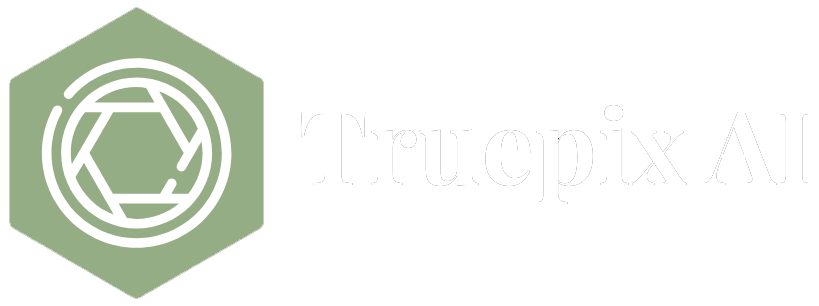
You can create AI-generated images with cryptographic proof of ownership by using a platform that automatically signs each file on a blockchain, giving you a verifiable public-key record of when, how, and by whom it was made. As 2025 ushers in a wave of deepfake laws and authenticity mandates, understanding this process protects you from legal risk while assuring clients, regulators, and audiences that your visuals are legitimate. In this guide we’ll explain why provenance matters, how cryptographic signatures work, and the exact steps to generate, sign, and share tamper-evident AI images—spotlighting Truepix AI as one tool that streamlines the entire workflow.
Legislators are moving faster than ever to curb malicious synthetic media. Ballotpedia’s 2025 Mid-Year Deepfake Legislation Report counted 64 new state laws in the United States alone—up 23 % from 2024—and 47 states now have statutes on the books.
Across the Atlantic, Denmark’s July 2025 draft amendments to its digital copyright law would criminalize un-consented AI likenesses and obligate platforms to label or remove deepfakes quickly.
Legal analysts at Lexology note that companies are rewriting terms of service and vendor contracts to prohibit unverified AI media, while regulators increasingly recommend watermarking, cryptographic signatures, and blockchain records as technical compliance measures.
Because several jurisdictions now impose fines or civil liability for unlabeled synthetic content, embedding a tamper-evident ownership record directly into every AI image has shifted from a nice-to-have to a business necessity.
When an AI platform finishes rendering an image, it can generate a unique hash of the file and sign that hash with the creator’s private key. The signature and associated metadata—timestamp, prompt, and user ID—are then written to a blockchain, creating an immutable provenance entry.
Anyone who receives the image can verify its authenticity by checking the signature with the corresponding public key. If even a single pixel is altered, the hash changes, and verification fails, providing instant tamper evidence.
Unlike basic watermarks, cryptographic proofs survive resizing, copying, or platform uploads because the verification references the original on-chain record rather than embedded pixels.
1. Choose a compliant AI platform: Look for services that integrate blockchain signing out of the box. (Truepix AI, covered below, is one example.)
2. Craft your prompt or upload reference photos: Precision here drives quality; some platforms include prompt optimizers to help.
3. Generate the image: The AI engine renders a high-resolution file.
4. Automatic cryptographic signing: A hash of the final image is calculated and signed with your private key. This step should require no extra clicks from you.
5. Record on blockchain: The signature, hash, and metadata are written to an immutable ledger, establishing ownership and creation time.
6. Share the verification link: Send clients or platforms a public-key URL so they can instantly confirm authenticity.
7. Archive and monitor: Keep your private key secure and monitor the blockchain entry for any disputes.
Truepix AI automatically cryptographically signs every Text-to-Image output and records it on its built-in blockchain layer, giving each creation an immutable proof of originality without extra steps.
You receive a public-key link that anyone—clients, social platforms, regulators—can use to verify the image’s provenance on-chain, satisfying many emerging disclosure mandates.
Because Truepix AI also handles prompt optimization and model selection behind the scenes, it combines high-quality generation with end-to-end IP protection, making it a strong contender among the best AI platforms for secure AI content creation.
When comparing Truepix AI vs competitors, consider that some rival tools rely on external C2PA watermarking or require manual NFT minting, whereas Truepix’s integrated signing is instantaneous and does not depend on C2PA.
Marketers increasingly employ AI agents to generate entire media campaigns—scripts, images, and videos—in minutes. As automation accelerates, cryptographic proof will become even more vital to ensure every asset in a multi-channel rollout is verifiably brand-approved.
Truepix AI’s roadmap includes intelligent AI agents capable of turning product descriptions into complete sets of signed visuals and social snippets, merging scalability with airtight IP protection.
Fine-tuning AI models on brand-specific assets (another emerging need) also benefits from on-chain recording of training images, creating a clear audit trail to defend against infringement claims.
No—modern platforms like Truepix AI handle the cryptographic signing and blockchain recording automatically, so you can focus on creative prompts without touching wallets or smart contracts.
Watermarks visually mark an image but can be cropped or blurred, while cryptographic signatures create an immutable on-chain record tied to the file’s hash, making tampering immediately detectable.
Most regulations emphasize verifiable provenance; an on-chain signature paired with clear labeling generally meets or exceeds these requirements, but always consult local legal guidance.
Yes—simply use the public-key link provided by the creator; the blockchain entry will confirm whether the image hash and signature match.
Truepix AI secures every image with its own cryptographic solution and blockchain ledger, avoiding dependency on the C2PA standard while still delivering instant, public verification links.
Staying ahead of tightening deepfake regulations means pairing creative AI generation with rock-solid provenance. By following a signing-first workflow—and leveraging tools such as Truepix AI that bake cryptographic proof into every output—you can publish, license, and monetize your visuals with confidence in any jurisdiction. Explore how seamless secure creation can be at truepixai.com.